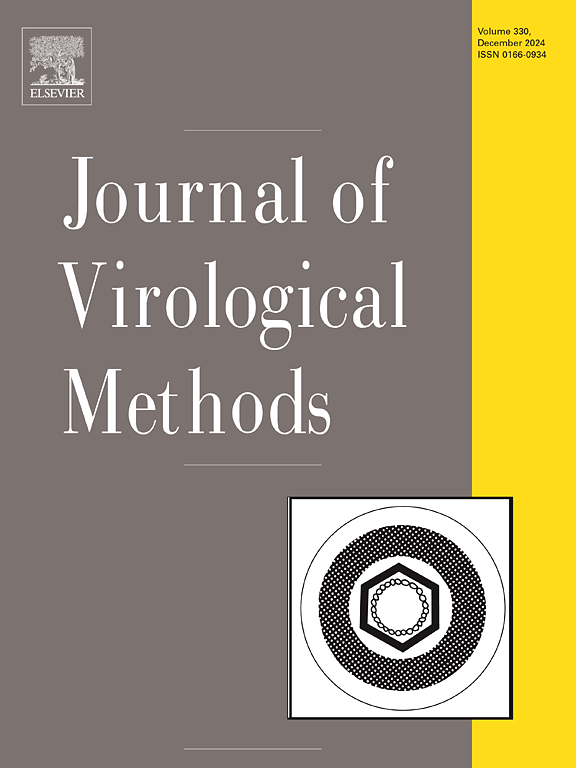Evaluation of an N1 NA antibody-specific enzyme-linked lectin assay for detection of H5N1 highly pathogenic avian influenza virus infection in vaccinated birds
IF 2.2
4区 医学
Q3 BIOCHEMICAL RESEARCH METHODS
引用次数: 0
Abstract
Unprecedented H5N1 highly pathogenic avian influenza (HPAI) outbreaks are occurring around the world and there is growing interest in the use of vaccines in affected regions. Vaccination when properly applied can contribute to HPAI control by significantly reducing virus shedding and breaking the transmission chain, but it requires robust surveillance to ensure that international trade is not affected. Thus, it is imperative to establish a test to differentiate vaccinated only animals from vaccinated and then infected animals (DIVA). In this study, we applied enzyme-linked lectin assay (ELLA) to specifically detect N1 neuraminidase (NA) antibody by inhibition of NA activity and provide a proof-of-concept bench validation using reference and experimental serum samples. We used a wild-type low pathogenic H7N1 virus of North American lineage as the ELLA antigen. The NA inhibition ELLA (NI-ELLA) was evaluated for its specificity and sensitivity using reference and experimental samples. The results demonstrated that the NI-ELLA was highly specific with low background NI activity against influenza-negative sera from different species although varying level of cross-reactivity was observed against sera of different NA subtypes with highest cross-reactivity against N4 subtype sera. Using a conservative positive cut-off threshold of 50 % NI activity, NI-ELLA provides 100 % specificity with all reference sera of 9 different NA subtypes. The relative sensitivity of NI-ELLA was evaluated in detecting H5N1 infection in vaccinated and then challenged birds and NI-ELLA showed higher detection rate of H5N1 infection compared with commercial NP ELISAs and real-time RT-PCR. Overall, the NI-ELLA shows high specificity and sensitivity and has the potential for application in DIVA surveillance with further validation.
求助全文
约1分钟内获得全文
求助全文
来源期刊
CiteScore
5.80
自引率
0.00%
发文量
209
审稿时长
41 days
期刊介绍:
The Journal of Virological Methods focuses on original, high quality research papers that describe novel and comprehensively tested methods which enhance human, animal, plant, bacterial or environmental virology and prions research and discovery.
The methods may include, but not limited to, the study of:
Viral components and morphology-
Virus isolation, propagation and development of viral vectors-
Viral pathogenesis, oncogenesis, vaccines and antivirals-
Virus replication, host-pathogen interactions and responses-
Virus transmission, prevention, control and treatment-
Viral metagenomics and virome-
Virus ecology, adaption and evolution-
Applied virology such as nanotechnology-
Viral diagnosis with novelty and comprehensive evaluation.
We seek articles, systematic reviews, meta-analyses and laboratory protocols that include comprehensive technical details with statistical confirmations that provide validations against current best practice, international standards or quality assurance programs and which advance knowledge in virology leading to improved medical, veterinary or agricultural practices and management.

 求助内容:
求助内容: 应助结果提醒方式:
应助结果提醒方式:


